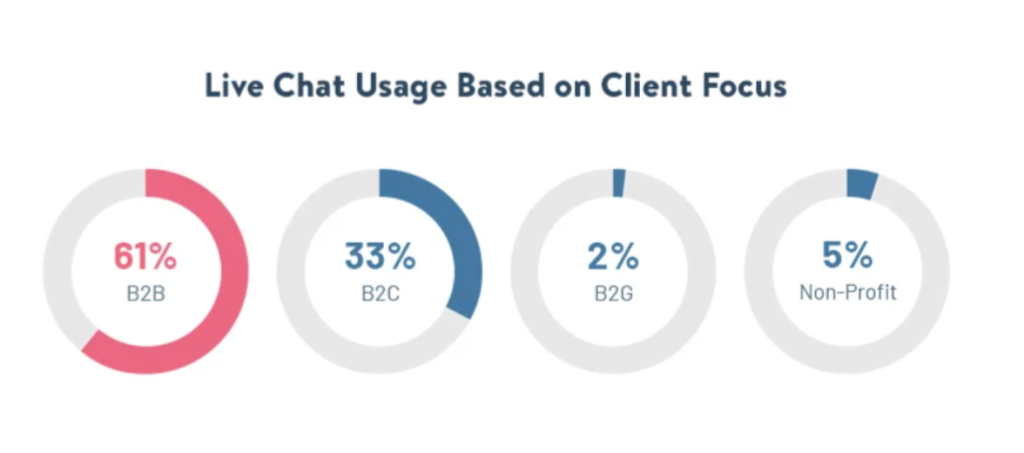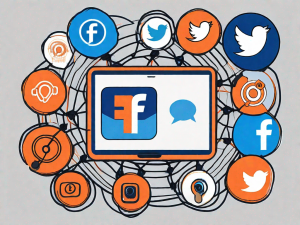Live chat has become an integral part of customer service for businesses of all sizes. Recent statistics show higher customer satisfaction scores from customers who use live chat – 73%, compared to only 61% for email and 44% for phone. During the holiday season, as well as other peak times for customer communications, businesses might see increased live chat volume. It is essential to be prepared for the inevitable surge. In this article, we will explore the impact of increased live chat volume, strategies for managing high chat volume, training your team, and leveraging technology to handle the influx of chats.

Understanding the Impact of Increased Live Chat Volume
The Role of Live Chat in Customer Service
Live chat serves as a direct channel of communication between businesses and customers. It allows customers to reach out for assistance, seek product information, or resolve issues without the need for phone calls or emails. The real-time interaction enhances the customer experience by providing instant support and personalized assistance.
According to Zoho, B2B businesses see the most number of their customers using live chat, while B2C businesses come in in second place.

When faced with a high chat volume, it is crucial to understand the role live chat plays in providing exceptional customer service. The ability to handle a large number of chat requests efficiently and effectively is a testament to a company’s commitment to customer satisfaction. It demonstrates its dedication to providing timely solutions and addressing customer concerns promptly.
Predicting Live Chat Volume Increases
Predicting chat volume increases can help businesses prepare for the surge. Monitoring historical data and analyzing trends can provide valuable insights into customer behavior and the factors that contribute to increased chat volume. By examining past patterns, businesses can identify peak periods and anticipate when chat volume is likely to rise.
However, predicting chat volume is not solely based on historical data. External factors such as product launches, marketing campaigns, or seasonal trends can also influence chat volume. Therefore, businesses need to consider both internal and external factors when forecasting live chat volume.
This analysis can help businesses determine the appropriate strategies to manage higher chat volume effectively. For instance, they may need to allocate additional resources, such as hiring more chat agents or implementing chatbot technology, to handle the increased workload. By proactively preparing for higher chat volume, businesses can ensure that customer service quality is not compromised during peak periods.
Furthermore, understanding the impact of increased live chat volume goes beyond managing resources. It also involves evaluating the effectiveness of chat interactions and identifying areas for improvement. Analyzing chat transcripts and customer feedback can provide valuable insights into common pain points, frequently asked questions, and areas where customers may be experiencing difficulties. This information can then be used to optimize chat scripts, train chat agents, and enhance the overall chat experience for customers.
Strategies for Managing High Live Chat Volume
Implementing Efficient Chat Routing
Efficient chat routing is essential to ensure that chats are directed to the most appropriate agent or department. Utilizing intelligent routing algorithms and setting up chat queues based on expertise can help streamline the chat handling process and reduce wait times for customers.
By implementing efficient chat routing, companies can ensure that customers are connected with agents who possess the necessary knowledge and skills to address their specific needs. This not only enhances the overall customer experience but also increases the chances of resolving issues in a timely manner.
Implementing a live chat queuing strategy that works for your business is also important. That creates an environment where agents know what to expect and can feel confident about the number of multiple chats they must handle.
Utilizing Canned Responses
Canned responses can significantly improve chat efficiency. Creating a library of commonly used responses allows agents to quickly address frequently asked questions, saving time and ensuring consistent responses.
With pre-defined responses, agents can provide accurate and standardized information to customers without having to type out the same response repeatedly. This not only speeds up the chat process but also ensures that customers receive consistent and reliable information.
Prioritizing Chats Based on Urgency
In times of high chat volume, it is important to prioritize chats based on urgency. Using chat management tools that allow tagging or categorizing chats by urgency levels can ensure that critical issues are addressed promptly.
By prioritizing chats based on urgency, companies can effectively manage customer expectations and ensure that urgent matters are not overlooked. This helps to prevent potential escalations and demonstrates a commitment to providing timely support.
Additionally, companies can consider implementing automated chatbots to handle low-priority inquiries, allowing human agents to focus on more urgent and complex customer issues. This combination of automated and human support can help optimize resource allocation and improve overall chat management efficiency.
Training Your Team for Increased Live Chat Volume
Enhancing Multitasking Skills
Dealing with a high chat volume requires agents to master the art of multitasking. Training agents to effectively handle multiple chats simultaneously, while maintaining a high level of customer service, is essential. Techniques like using keyboard shortcuts, utilizing efficient chat interfaces, and providing ample breaks can contribute to improving multitasking abilities.
One effective way to enhance multitasking skills is by implementing time management techniques. Agents can learn to prioritize chats based on urgency and importance, ensuring that they are addressing the most critical issues first. Additionally, training agents to use chat management tools that allow them to easily switch between conversations and keep track of ongoing chats can greatly improve their multitasking capabilities.
Improving Typing Speed and Accuracy
Typing speed and accuracy play a vital role in chat-based customer service. Training agents to type faster while maintaining accuracy can significantly impact chat efficiency. Offering typing speed improvement exercises and utilizing typing speed testing tools during training sessions can aid in enhancing agents’ typing skills.
Moreover, incorporating touch typing techniques into the training can further enhance agents’ typing speed and accuracy. Touch typing involves using all fingers to type without looking at the keyboard, allowing agents to type faster and with fewer errors. By practicing touch typing exercises and providing continuous feedback, agents can gradually improve their typing skills and handle high chat volume more efficiently.
Developing Effective Communication Techniques
Effective communication is the backbone of successful live chat interactions. Training agents to use concise language, active listening skills, and empathetic responses can enhance the overall chat experience for customers. Ongoing training sessions focusing on improving communication skills can help agents handle high chat volume with ease.
In addition to verbal communication skills, training agents on non-verbal cues can also be beneficial. Agents can learn to use emojis, gifs, and other visual elements to convey emotions and engage customers in a more interactive way. By incorporating these elements into their chat responses, agents can create a more personalized and engaging experience for customers, even during high chat volume periods.
Furthermore, providing agents with real-life scenarios and role-playing exercises during training can help them practice effective communication techniques in a simulated environment. This allows agents to gain confidence in handling various customer situations and adapt their communication style accordingly.
Using Software Analytics to Look Ahead
Chat analytics is a great feature of live chat software that businesses should prioritize. By analyzing chat data, businesses can gain valuable insights into customer behavior, preferences, and pain points. This information can be used to optimize chat workflows, identify areas for improvement, and enhance the overall customer experience.
Bottom Line
Preparing for increased live chat volume requires businesses to understand the impact it can have on their operations. Developing effective strategies, such as implementing chat routing, canned responses, and AI integration, is crucial. Additionally, training the team appropriately on the use of live chat software and AI technologies is essential to ensure a smooth customer service experience even during periods of high chat volume.
By leveraging technology and implementing these measures, businesses can effectively handle increased chat volume, meet customer expectations, and maintain a high level of customer satisfaction.
Ready to transform your customer service experience and manage increased live chat volume with ease? Look no further than LiveHelpNow, the omnichannel customer support suite designed to unify your customer communication across all platforms. Embrace the power of AI to automate routine inquiries and free up your agents to tackle more complex issues. With LiveHelpNow, you’re not just getting a tool; you’re upgrading to a smarter, more efficient customer service solution. Start your journey towards exceptional customer support today with a Free 30 Day Trial and see the difference for yourself!




